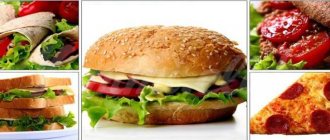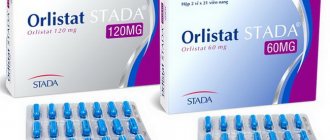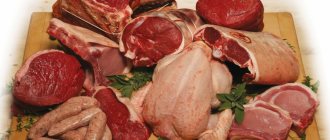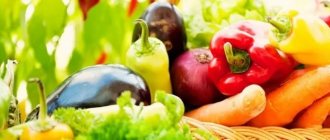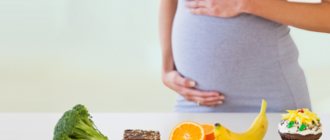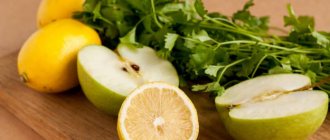Protein restriction
The inflammatory process leads to disruptions in acid-base and water-electrolyte balance. Patients are susceptible to the appearance of edema, hypertension, and toxic poisoning from residues of metabolic products. Inflammation is diagnosed if studies confirm pyelonephritis or nephritis.
Nutritionists advise that if you have problems with the urinary tract, give preference to a diet with a minimum amount of protein. When this element is exchanged, nitrogenous wastes are formed; removing them from the body is problematic in case of diseased kidneys.
It is impossible to remove proteins from the daily menu, since they form the basis of cells. Low-protein diets for kidney disease eliminate unpleasant symptoms. Doctors recommend introducing stewed fish or low-fat meat, chicken and quail eggs into your diet. In case of renal failure in the chronic stage, it is permissible to consume no more than 50 g of protein. The exact amount is determined by a nutritionist, taking into account the phase of development of the pathological process, the age and weight of the patient.
If there are minor disturbances in the functioning of the kidneys, then there is no need to limit protein foods. In this case, the attending physicians recommend that patients spend fasting days once or twice a week.
Use of spices and seasonings
During the diet, you should avoid eating spicy, pickled and smoked foods. To prevent food from seeming tasteless and bland, you can add a little dried dill, cinnamon or class=”aligncenter” width=”614″ height=”413″[/img]
When diagnosing pyelonephritis, glomerulonephritis or other infectious and inflammatory diseases, you should completely avoid salt and products containing it. In other cases, you are allowed to consume no more than 5 g of salt per day.
Unloading the body in case of kidney disease
Fasting days mean the consumption of one type of product during the day. Nutritionists recommend that patients with kidney pathology practice carbohydrate fasting days. Possible options:
- cucumber;
- oat;
- apple;
- watermelon;
- berry;
- vegetable;
- fruit.
Such foods help increase urine levels and improve the excretion of protein metabolic products. As a result of unloading the body, blood pressure normalizes and unpleasant symptoms of the disease are eliminated.
Therapeutic nutrition for kidney diseases on fasting days allows you to consume 1.5 kg of fruits, vegetables or berries per day. In this case, you only need to select one type of product. All food should be divided into five to six servings.
During unloading, vegetables are consumed raw, stewed or boiled. You can make salads and season them with a small amount of vegetable oil. It is acceptable to use sour cream or natural yogurt with a low fat content.
Healthy Kidney Health Foods
Food is the main source of both beneficial and harmful substances for the body. And the kidneys in the body work as a natural filter that allows you to remove excess fluid and harmful toxins. Eating more healthy foods reduces the load on the kidneys.
Foods necessary for proper kidney function include:
- liquids. First of all, this is the most ordinary water, in an amount of at least 2 liters per day, natural juices, fruit drinks;
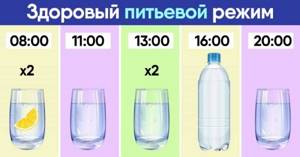
- vegetables. White cabbage, leaf cabbage, cauliflower, carrots, sweet peppers, pumpkin, asparagus, cucumbers;
- fruits. Apples and plums are rich sources of vitamins, antioxidants that help remove toxins;
- berries. Cranberries, blueberries, cherries, raspberries, red grapes, sea buckthorn and watermelon. Berries relieve inflammation and are considered good antioxidants and sources of vitamins;
- fish. It is the main source of omega-3 acid, which cleanses the body of radicals, improves immunity and prevents kidney inflammation. Salmon, trout, and mackerel can be called valuable for the kidneys;
- pumpkin seeds and the pumpkin itself;
- Rye bread. Fiber improves digestion and thus promotes smooth functioning of the kidneys.
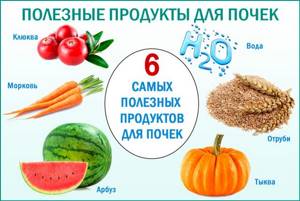
Foods good for the kidneys
You should try to eat foods that are good for your kidneys every day. Proper, balanced nutrition has a positive effect on the functioning of the whole body.
Limiting salt
Protein-free diets for kidney disease involve limiting daily salt intake. In case of complex pathologies, it is prohibited to include the spice in the diet. The consumption of marinades, sausages and smoked products, cheeses, mineral water, and canned food that contain salt is not allowed.
Patients are advised to choose salt-free bread; they can bake it themselves. If there is a slight impairment of kidney function, adding salt to food is allowed. It is recommended to consume no more than ½ teaspoon of spice per day.
Detailed information about the diet should be checked with your doctor. Patients with chronic renal failure, glomerulonephritis and nephrotic syndrome must adhere to table No. 7. Nutrition includes limiting salt, reducing protein intake, and fasting days.
Protein-free and low-protein diet: what is it?
A protein diet for kidney problems is prohibited. You should not completely eliminate salt - this can lead to kidney failure.
The main task is to reduce the workload of the affected kidney as much as possible. For these purposes, the patient is prescribed a protein-free or low-protein diet. The basic rule is less animal proteins and more carbohydrates.
Protein ingredients in the diet do not exceed 0.7 g/kg body weight. 70% of proteins must come from animal products, otherwise amino acid deficiency is possible.

This restriction should be adhered to for no more than 2 weeks.
Indications for the diet:
- inflammation of the genitourinary system (pyelonephritis, glomerulonephritis, cystitis),
- kidney failure,
- kidney stone disease.
Varieties of diet No. 7
The seventh table is recommended for patients diagnosed with kidney inflammation. Existing diets take into account differences in the stages of disease development. During exacerbation, recovery and remission, it is necessary to eat different types of food.
When prescribing a certain type of diet for sick kidneys, the doctor takes into account the function of the damaged organ - the presence or absence of kidney failure. With different pathologies, kidney function is impaired to varying degrees.
| Table number | Pathology |
| 7 | Nephropathy, renal failure in pregnant women, acute stage of nephritis, glomerulonephritis in remission |
| 7A | Chronic nephritis accompanied by renal failure, glomerulonephritis in the acute phase |
| 7B | Nephritis in the acute stage, chronic glomerulonephritis in the acute stage, transition from table 7A |
| 7V | nephrotic syndrome in the chronic stage |
| 7G | renal failure in the last stage, connection of an artificial kidney (for hemodialysis) |
Diet 7A implies a complete abstinence from salt. Patients should give preference to foods of plant origin. The daily protein intake cannot exceed 20 g. Adhering to this principle of nutrition is allowed for a short period, since the diet is not balanced.
It is worth switching to table No. 7B when azotemia decreases and the pathological process subsides. The daily protein requirement in it increases to 40 g. With improvement, with the permission of the attending physician, the patient moves to table No. 7.
Diet No. 7B is characterized by an increased amount of protein food. You can consume up to 125 g of protein per day. This type of diet 7 is used for kidney diseases, which are characterized by the loss of proteins from the body. They are excreted in urine. It is necessary to replenish supplies in a timely manner. Table No. 7G is indicated for patients on hemodialysis. The allowed daily salt intake in this type of diet reaches ½ teaspoon of salt, protein - up to 60 g.
Basic nutrition rules
The menu is developed by a doctor who prescribes effective treatment. The specialist must take into account:
- anti-inflammatory properties, they speed up recovery;
- improving the outflow of fluid from tissues;
- consumption of foods that normalize blood pressure and water balance;
- reducing the load on the damaged organ;
- preventing the disease from becoming chronic;
- sufficient amounts of minerals and vitamins for the proper functioning of the immune system.
Nutrition involves limiting the amount of salt, but you can’t exclude it completely from the menu. This contributes to the development of kidney failure. Food is flavored with herbs and spices. When preparing food, it is recommended to use simple methods - stewing, steaming or boiling. The patient's body should not suffer from nutritional deficiencies.
Nutritionists recommend not eating more than a couple of hours before bedtime. This regimen is especially important for patients with pyelonephritis. You need to drink at least 1 liter of pure still water per day. In the absence of swelling, you can increase the norm to 2-2.5 liters. If the patient has a reduced hemoglobin level, then it is strongly recommended to include pomegranates, strawberries, and apples in the diet.
Grocery list
Dietary nutrition is quite strict, but necessary for complete treatment. Patients suffering from stones or other kidney diseases are strongly recommended to exclude the following foods from the menu: garlic, mushrooms, sorrel, beans, onions, salt, cocoa and coffee, dark chocolate, fatty fish, animal meat - all this cannot be eaten when sick kidney!
It is worth reducing alcohol consumption to a minimum, removing various sausages, canned food, baked goods and cottage cheese from your diet.
What can you eat
In general, you can consume dairy products, but large amounts of potassium and phosphorus in the body are also not necessary for this disease.
The list of prohibited foods is quite long, but the diversity of your diet should not suffer from this. You can eat: lean soups, vegetables, lean meats and fish, eggs. You are allowed to eat sugar, honey, various jams, fruits and juices.
It is worth noting that such strict restrictions are imposed only on those who have kidney stones or kidney failure; other people should slightly adjust their daily diet and reduce the amount of salt in the body to 2 grams per day.
It is recommended to monitor not only your salt intake, but also the number of calories you eat, about 3-4 thousand, and your diet should mainly consist of carbohydrates and fats.
General recommendations for therapeutic dietary nutrition:
- Eat meals 3-5 times a day, at the same time;
- Eliminate from your diet light, disordered snacks between meals, such as tea with sweets, crackers, and the like;
- Reduce serving size to 300 grams;
- Replace black tea with rosehip infusion with honey.
What not to eat
Patients with kidney problems are prohibited from consuming:
- pickled, salted, fried, fatty foods;
- strong meat/fish/mushroom broths;
- canned food;
- semi-finished products;
- seafood;
- sharp cheeses;
- store-bought sauces and seasonings – ketchup, mayonnaise, horseradish;
- strong black tea, coffee and cocoa;
- black bread;
- dairy products with high fat content;
- radishes, onions and green onions, garlic;
- alcoholic drinks, regardless of strength;
- chocolate;
- cream products;
- legumes;
- fat, lard, margarine.
When pyelonephritis passes into an inactive stage, the diet can be expanded. But patients need to adhere to the principles of a low-protein diet.
Fully or partially limited products
- Broths (fish, meat and mushroom).
- Animal fats.
- Salty products: canned food, cheeses, chips, sausages, sauces, ketchups, salted nuts, marinades, soup concentrates, bouillon cubes, margarine, salted butter.
- Potassium-containing foods: sorrel, bananas, coffee, milk powder, millet porridge, curry, fruit juices, fish, meat, chocolate, rhubarb, avocado, seeds, sesame, dried fruits, potatoes, many nuts (primarily almonds, peanuts, pine nuts) , peanut butter and paste, wine, beer, parsley, tomatoes (and products made from them - ketchup, sauce, juice), spinach, apple juice and syrup, beets, artichokes, soy products, soybeans, mushrooms, beans, lentils.
- Phosphorus-containing products: milk, cheeses, liver, kidneys, fish, fish caviar, chocolate, mushrooms, bran, nuts, seeds.
- Alcohol and carbonated drinks.
Table of prohibited products
| Proteins, g | Fats, g | Carbohydrates, g | Calories, kcal | |
Vegetables and greens | ||||
| vegetables legumes | 9,1 | 1,6 | 27,0 | 168 |
| sauerkraut | 1,8 | 0,1 | 4,4 | 19 |
| bulb onions | 1,4 | 0,0 | 10,4 | 41 |
| canned cucumbers | 2,8 | 0,0 | 1,3 | 16 |
| pickles | 0,8 | 0,1 | 1,7 | 11 |
| radish | 1,2 | 0,1 | 3,4 | 19 |
| white radish | 1,4 | 0,0 | 4,1 | 21 |
| turnip | 1,5 | 0,1 | 6,2 | 30 |
| tomatoes | 0,6 | 0,2 | 4,2 | 20 |
| canned tomatoes | 1,1 | 0,1 | 3,5 | 20 |
| spinach | 2,9 | 0,3 | 2,0 | 22 |
| sorrel | 1,5 | 0,3 | 2,9 | 19 |
Fruits | ||||
| apricots | 0,9 | 0,1 | 10,8 | 41 |
| bananas | 1,5 | 0,2 | 21,8 | 95 |
| figs | 0,7 | 0,2 | 13,7 | 49 |
| nectarine | 0,9 | 0,2 | 11,8 | 48 |
| peaches | 0,9 | 0,1 | 11,3 | 46 |
Mushrooms | ||||
| mushrooms | 3,5 | 2,0 | 2,5 | 30 |
| marinated mushrooms | 2,2 | 0,4 | 0,0 | 20 |
Nuts and dried fruits | ||||
| raisin | 2,9 | 0,6 | 66,0 | 264 |
| dried apricots | 5,2 | 0,3 | 51,0 | 215 |
| dried apricots | 5,0 | 0,4 | 50,6 | 213 |
| dates | 2,5 | 0,5 | 69,2 | 274 |
Cereals and porridges | ||||
| semolina | 10,3 | 1,0 | 73,3 | 328 |
| cereals | 11,9 | 7,2 | 69,3 | 366 |
| corn grits | 8,3 | 1,2 | 75,0 | 337 |
| pearl barley | 9,3 | 1,1 | 73,7 | 320 |
| millet cereal | 11,5 | 3,3 | 69,3 | 348 |
Flour and pasta | ||||
| pasta | 10,4 | 1,1 | 69,7 | 337 |
Chocolate | ||||
| chocolate | 5,4 | 35,3 | 56,5 | 544 |
Raw materials and seasonings | ||||
| ginger | 1,8 | 0,8 | 15,8 | 80 |
| ketchup | 1,8 | 1,0 | 22,2 | 93 |
| mayonnaise | 2,4 | 67,0 | 3,9 | 627 |
| tomato sauce | 1,7 | 7,8 | 4,5 | 80 |
Meat products | ||||
| pork | 16,0 | 21,6 | 0,0 | 259 |
| salo | 2,4 | 89,0 | 0,0 | 797 |
Bird | ||||
| smoked chicken | 27,5 | 8,2 | 0,0 | 184 |
| duck | 16,5 | 61,2 | 0,0 | 346 |
| smoked duck | 19,0 | 28,4 | 0,0 | 337 |
| goose | 16,1 | 33,3 | 0,0 | 364 |
Fish and seafood | ||||
| dried fish | 17,5 | 4,6 | 0,0 | 139 |
| smoked fish | 26,8 | 9,9 | 0,0 | 196 |
| black caviar | 28,0 | 9,7 | 0,0 | 203 |
| salmon caviar granular | 32,0 | 15,0 | 0,0 | 263 |
| canned fish | 17,5 | 2,0 | 0,0 | 88 |
Oils and fats | ||||
| animal fat | 0,0 | 99,7 | 0,0 | 897 |
| cooking fat | 0,0 | 99,7 | 0,0 | 897 |
Juices and compotes | ||||
| tomato juice | 1,1 | 0,2 | 3,8 | 21 |
| * data is per 100 g of product | ||||
What can you eat
Despite the extensive list of prohibited dishes, the menu of patients can be complete. As part of complex therapy, patients are allowed to include in their diet every day:
- durum wheat pasta;
- no more than 200 g of boiled lean meat per day;
- bread with bran, but without salt;
- any cereals cooked in low-fat milk or water;
- no more than 2 chicken eggs per day;
- vegetable broths with cereals or pasta.
In the acute stage, the following may be included in the menu:
- vegetables in boiled, baked or raw form;
- non-acidic greens;
- baked, boiled or fresh fruits, in the form of juices, jelly, compotes;
- weakly brewed green tea/coffee;
- dairy products in limited quantities.
What foods and drinks are strictly prohibited and harmful?
The main goal of therapy is to prevent irritation of the mucous membranes of the genital organs and urinary system, so nutrition must be appropriate.
Exclude from the diet:
- Smoked meats, pickles and spicy dishes.
- Fried, pickled and canned food.
- Fatty meats: pork, lamb.
- Spicy vegetables: chili peppers, radishes, radishes.
- Some types of fruits: bananas, peaches, exotic foods (such as passion fruit), sour apples.
- Some types of greens: sorrel, parsley.
- Spices.
- Oils of vegetable and animal origin.
- Dairy products containing a large amount of fat: cheeses and sour cream.
- Pasta.
- Tomatoes.
- Sauce dressings and mayonnaise.
- Products containing GMOs.
- Sugar.
- Confectionery products (except for those permitted from the previous list).
- Chocolate and chocolate drinks.
- Citrus fruits and their juice.
- Strong tea and coffee beans, carbonated drinks.
- Alcoholic drinks.
Sample menu for 7 days
In diets for diseases of the kidneys and urinary tract, completeness and balance are important. The diet is often prepared for 7 days, which allows you to track the amount of protein consumed per day. The table shows an approximate version of the weekly menu, taking into account prohibited and permitted components.
| day | breakfast | lunch | dinner | dinner | before bedtime |
| first | rice milk porridge, curd cheese with raisins, green tea | low-fat cottage cheese casserole | lean soup with vegetables, 200 g of boiled lean meat, homemade compote | rice and curd casserole, broth with rose hips | homemade fermented baked milk |
| second | milk buckwheat porridge, boiled beets, rosehip decoction | cottage cheese and kefir with added sugar | potato soup, boiled beef, compote | meat casserole, sweet curd mass, tea with milk | kefir |
| third | vinaigrette with boiled fish, cottage cheese with low-fat sour cream, fruit/vegetable juice | mashed potatoes with boiled fish | vegetable soup with cereals, boiled meat, apple compote | steamed fish cakes, pasta casserole, low-fat milk | low fat kefir |
| fourth | semolina porridge and green tea | mashed potatoes and boiled lean fish | vegetarian borscht, boiled beef, homemade compote | oatmeal with berries, potato casserole | curdled milk |
| fifth | boiled rice with vegetables, freshly squeezed fruit juice or compote | cottage cheese casserole | lean borscht, piece of boiled lean meat, compote | cottage cheese casserole, pancakes with apple filling, fruit jelly | raisins, dried apricots no more than 100 g |
| sixth | rice porridge cooked in low-fat milk, 0% fat cottage cheese, green tea with the addition of 1 tsp. natural honey | vinaigrette, oat milk porridge with added fruit, milk | vegetarian vegetable soup, buckwheat porridge with boiled meat, apple compote | steamed fish cutlets, pasta casserole, low-fat milk | homemade curdled milk |
| seventh | milk buckwheat porridge, carrot cutlets, green tea with honey | low-fat cottage cheese pudding, rosehip decoction | vermicelli milk soup, boiled rice with a piece of veal, cherry compote | meat casserole, green tea with honey | low-fat kefir |
The menu is compiled taking into account the general condition of the patient and concomitant diseases. Before going to bed, nutritionists allow you to drink low-fat milk, sweetened kefir, and decoctions of medicinal herbs.
At lunch there must be a first course - mainly vegetable soup with the addition of cereals. It is also allowed to include 200 g of chicken, veal, and beef in the diet every day. For drinks, preference is given to juices, jelly or compotes of cherries, apples, and any sweet fruits.
Reviews and results
This therapeutic diet is quite varied, as it includes all cereals, vegetables, all types of meat, and any cooking methods are allowed. The only downside is the significant restrictions on salt, which makes the dishes tasteless. Some patients find it difficult to get used to this and note that even the addition of permitted dry herbs and lemon juice does not improve the taste. It must be remembered that this is a therapeutic diet and such restrictions are dictated by the condition of the patients (edema, high blood pressure). Strict adherence to the diet affects the results - after 4-5 days, swelling decreases, blood pressure returns to normal and general condition improves.
- “... During pregnancy, edema appeared and protein was detected in one urine test. A renal diet was prescribed, although the blood pressure was normal. The doctor said that this would definitely happen, otherwise there would be a risk of premature birth, and even eclampsia. It was unbearable to eat unsalted food, but for the sake of my health and that of the child, I endured it until the birth. I took tests every week. The swelling went down on the fifth day, because a lot of urine came out, it became easy to walk and breathe. I followed all the recommendations and went to the hospital for 10 days for support”;
- “... When I suffered from acute glomerulonephritis, I was prescribed nutritional therapy for six months. The hardest thing for me was eating unsalted food. In general, the diet is quite doable: you can eat all cereals, any soups, any meat, but in limited quantities. I baked myself unsalted pancakes and made them with different vegetable fillings, cottage cheese and jam. So everything is tolerable. Only six months later they increased the amount of salt, and then the diet became normal. All this time I took tests and was observed by a doctor”;
- “... I was in the hospital with acute pyelonephritis. There was a high temperature, high blood pressure, and my legs were slightly swollen. They injected me with antibiotics, and at first I even took painkillers for pain, because I couldn’t sit, lie down, or walk. The hospital had a salt-free table, but during the day I was allowed to add 5 g of salt to all dishes. This is also good, because the girls from the ward were generally forbidden to eat salt. I did not violate the recommendations and refused ready-made foods with salt that my relatives brought. Then I didn’t eat sausages or pickles for about a year. There were difficulties with eating at work, as I had to take lunch with me.”
Recipes for dishes that are allowed for kidney disease
The ingredients used are recommended by a nutritionist. These recipes can be used in the daily diet by patients diagnosed with pyelonephritis and other kidney pathologies.
Tender pumpkin soup

To prepare you will need:
- 300 g pumpkin;
- 200 g lentils;
- 100 g fresh carrots;
- 100 g tomatoes;
- 100 g potatoes;
- 1.5 liters of water;
- 30 ml vegetable oil;
- herbs, spices - to taste.
Cooking process:
- Rinse the lentils thoroughly and soak overnight.
- Wash, peel and chop the vegetables.
- Make a cross-shaped cut on the tomatoes, put them in boiling water, remove the skins, and mash the tomatoes with a fork.
- Pour oil into a saucepan and add carrots.
- Dry the pumpkin and potatoes and place in a container. Simmer for 15 minutes.
- Add lentils, pour in water.
- After boiling, cook for 20 minutes.
- Add tomatoes and spices. Cook for 15 minutes.
- Add the greens at the end, turn off the soup and leave covered.
- Blend a warm dish with a blender to give a tender consistency.
One-day menu table 7b (with increased protein content in the diet)
(Kcal 2404)
| Dishes | Quantity (g) | Proteins (g) | Fats (g) | Carbohydrates (g) |
| 1 Breakfast | ||||
| steamed egg omelette | 100 | 7.4 | 4.42 | 2.82 |
| oatmeal with milk and butter | 200 | 7.79 | 9.61 | 27.29 |
| tea with milk | 130 | 1.52 | 1.14 | 2.19 |
| 2 Breakfast | ||||
| any fruits (apples, oranges, grapefruits, pears, tangerines) | 100 | 0.4 | 0.4 | 9.8 |
| Dinner | ||||
| vegetarian soup with sour cream | 500 | 3.59 | 4.54 | 22.14 |
| boiled beef meat | 50 | 16.36 | 7.96 | 0.97 |
| stewed beets | 150 | 2.46 | 5.15 | 17.71 |
| sweet apple compote | 200 | 0.22 | 0.22 | 20.26 |
| Afternoon snack | ||||
| rosehip decoction | 200 | — | — | — |
| crackers (from the daily allowance of salt-free bread) | 25 | — | — | — |
| prunes | 60 | 0.69 | — | 17.34 |
| Dinner | ||||
| steamed meat balls | 100 | 16.74 | 7.82 | 9.34 |
| potatoes boiled in their jackets with butter and fresh dill, parsley, onions | 150 | 3.6 | 4.24 | 23.41 |
| fresh carrot-apple salad dressed with vegetable oil | 170 | 1.58 | 5.37 | 14.06 |
| tea | 180 | — | — | — |
| For the night | ||||
| kefir 3.2% fat | 180 | 5.04 | 5.76 | 7.38 |
| All day | ||||
| wheat bread | 150 | 11.4 | 1.35 | 70.05 |
| Rye bread | 150 | 9.9 | 1.8 | 51.3 |
| sugar | 30 | — | — | 29.94 |
| butter | 15 | 0.12 | 10.86 | 0.19 |
| vegetable oil | 10 | — | 9.99 | — |
| Total | 88.81 | 80.63 | 331.2 | |
Back to Top
If you find an error, please select a piece of text and press Ctrl+Enter.
| Don’t be shy, but quickly share the information with your friends! |
| The more of us there are, the better for everyone! |
| Many thanks to everyone who did not remain indifferent and shared the post! |
